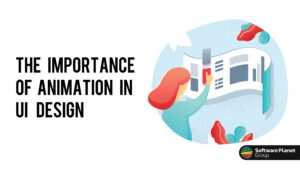Picture this: you’re tasked with building a city. Do you start by laying bricks for houses, pouring concrete for roads, and installing street lamps? Most rational people would say no—yet this is precisely how many software products get built. We begin with features, pile on more features, and wonder why our ‘digital city’ feels more like a collection of random buildings than a thriving community.
Here’s something that keeps our development team at Software Planet Group awake at night: a product isn’t a collection of features any more than a city is a collection of buildings. Both need something far more fundamental—a unifying concept that gives meaning to every component.
At a Glance

The Philosophy Behind the Code
In software development services, we often get caught up in the mechanics—the elegant algorithms, the clean architecture, the perfectly optimised database queries. But step back for a moment. What separates a genuinely successful product from a technically impressive failure?
It’s the difference between building a cathedral and assembling a pile of beautifully carved stones. The cathedral has purpose, intention, and a guiding vision that influences every architectural decision. Each column, each window, each arch serves not just its individual function but contributes to something greater.
Your product needs this same coherent vision—what we like to call its ‘conceptual DNA’. This isn’t marketing fluff or a mission statement written by committee. It’s the fundamental answer to why your product exists and what problem it’s genuinely solving in the world.
When Concepts Go Missing
We’ve witnessed this firsthand in our London software development practice. A client approaches us with a list: “We need user authentication, a dashboard, payment processing, and reporting.” Perfectly reasonable features, all technically sound. But when we dig deeper with questions like “What’s the core problem you’re solving?” or “How will users’ lives be different after using this?”, we often uncover something fascinating.
Sometimes there’s a crystal-clear vision hiding beneath the feature list. Other times, there’s… well, there’s uncertainty. And that’s perfectly human and fixable.
The trouble begins when development teams start coding without that clarity. Features get built in isolation. The authentication system doesn’t quite align with how users actually think about privacy. The dashboard shows data that seemed important in a meeting but doesn’t help users make decisions. Each component works, but they don’t work together toward anything meaningful.
It’s like building houses without considering whether they’ll form a neighbourhood or just a random collection of structures.
Crystallising Your Product’s Concept
So how do you uncover or develop this guiding concept? It’s less mystical than it might sound, though it does require some honest introspection.
Start with the human story. Not the user story format we use in agile development (though those come later), but the actual human narrative. Who is struggling with what problem? What does their day look like now, and how could it be different?
Ask the uncomfortable questions. Why does this product need to exist when alternatives already do? What unique perspective or approach are you bringing? If your product disappeared tomorrow, what would people actually miss?
Get specific about success. Not revenue targets or user acquisition metrics (though those matter), but genuine success for your users. What will they be able to do, feel, or achieve that they couldn’t before?
Here’s a practical exercise that works remarkably well in our software development consultancy: imagine explaining your product to someone’s grandmother. Not in a patronising way, but with genuine clarity about what it does and why it matters. If you can’t do this without using industry jargon or feature lists, your concept probably needs more work.
The Concept as Filter
Once you’ve got a clear concept, something magical happens. It becomes a filter for every subsequent decision. Should we add that shiny new feature? Does it serve the core concept or just add complexity? Should we integrate with that popular API? Does it align with how we’re solving the fundamental problem?
This isn’t about being rigid or ignoring good opportunities. It’s about having a framework for making decisions that compound toward something coherent rather than fragmenting your product’s identity.
We’ve seen teams save months of development time by simply asking: “Does this feature make sense within our product’s concept?” It’s amazing how many initially appealing ideas don’t pass this test—and how much stronger the remaining features become when they’re all pulling in the same direction.
Finding Your Way When the Path Isn’t Clear
What happens when you’re still exploring, still figuring out what your product should become? This is where the real craft of bespoke software development comes in.
User interviews become archaeology. You’re not just gathering requirements; you’re excavating the underlying problems and frustrations that your users might not even articulate clearly. Listen for what they’re trying to accomplish, not what they say they want.
Prototype concepts, not just features. Build small experiments that test different approaches to the same underlying problem. See which ones feel right to both you and your users.
Watch for patterns in your own thinking. When you get excited about a particular aspect of your product, what is it really about? Often, your instinctive enthusiasm points toward the true concept.
Embrace the iterative discovery. Your first attempt at defining the concept probably won’t be perfect, and that’s fine. Products, like cities, evolve. But having some guiding principle—even if it’s provisional—is better than having none at all.
The Technical Implications
This philosophical approach has very practical consequences in custom software development. When your team understands the product’s core concept, they make better technical decisions at every level. Database schema design, API structure, user interface patterns—they all become more coherent when they’re serving a unified vision.
It also makes communication with stakeholders infinitely easier. Instead of debating individual features in isolation, you can evaluate them against the shared understanding of what you’re building and why.
At Software Planet Group, we’ve found that software development projects in London and beyond with clear concepts move faster, encounter fewer unexpected complications, and ultimately deliver more value to users. It’s not just better development practice; it’s better business sense.
The Uncomfortable Truth About Features
Here’s something that might sting a bit: most features you think you need, you probably don’t. At least not yet. The concept-first approach often reveals that you can solve your users’ core problem with far fewer features than you initially imagined.
This isn’t about building minimal products for the sake of it. It’s about building products where every feature genuinely contributes to the whole. Where each component strengthens the others rather than competing for attention.
Think of it as the difference between a Swiss Army knife and a scalpel. Both have their place, but if you’re performing surgery, you want the tool designed specifically for precise cutting, not the one that also includes scissors and a bottle opener.
Moving Forward
So where does this leave you? Whether you’re at the beginning of a product journey or questioning why your existing features don’t quite gel together, the path forward involves asking some fundamental questions about purpose and vision.
It’s not always comfortable work. It requires admitting when you’re not sure about something, pushing past the easy answers, and sometimes realising that your carefully planned feature list might not be serving your actual goals.
But here’s what we’ve learned from years of providing software development services: the products that truly matter—the ones that users genuinely love and businesses genuinely benefit from—almost always start with clarity about why they exist.
Your product’s concept isn’t just philosophical decoration. It’s the foundation that makes everything else possible. Get that right, and the features that follow will have purpose, coherence, and power.
Get it wrong, and you might just end up with a very sophisticated pile of digital bricks.


